Pipe cutting equipment: types of tools and features of their application
In the manufacture and installation of pipe products for various purposes, special equipment for cutting pipes is used. It allows you to cut a fragment of the required size from the base blank. The design of the device consists of a thrust housing and cutting rollers.
The force transmitted through the lever acts on the cutting roller and converts the pressure created on the pipe cutter body into rotational movements. The result is a smooth, neat cut that makes it easy and convenient to connect a separate part of the pipe to the overall system.
We will talk about a tool for cutting pipes, types of pipe cutters and the principles of their work, as well as how to properly cut pipes of various diameters.
The content of the article:
Classification of modern pipe cutters
Tools designed for trimming pipes, in the first place, differ from each other in power and ability to work with materials of different densities.
Universal pipe cutters calmly withstand high loads and easily cope with thick-walled steel and cast-iron pipes with a diameter of up to 12 mm. The progressive devices equipped with a clamp latch belong to the same class. Thanks to her, the tool becomes stronger and easily cuts a pipe with a diameter of up to 324 mm.
The second group includes equipment designed to work with pipe products from thinner material: brass, copper and stainless steel. Plastic and metal-plastic pipes are usually cut with the same tool, especially when it is necessary to observe the most accurate dimensions and get an ideal straight-line cut at the output.
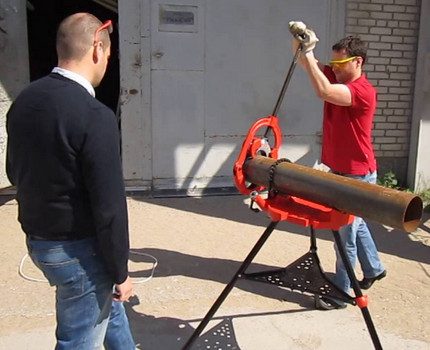
More details about the types of pipe cutters for plastic pipes can be found in in the article we recommend.
The third category includes units for processing brittle, crumbling material. They are used for cutting ceramic, concrete and asbestos-cement pipes. The tool provides a neat and smooth cut line and does not knock pieces from the edge.

For personal purposes, equipment with a mechanical lever drive is more suitable for performing one-time repair and installation works. Electric tools of this class are mainly used for regular work of a mass nature (the provision of services for laying sewers, gas and water pipes, etc.).
Contact with a cutting power unit requires certain skills and professional abilities, so it is rarely used in everyday life.

Design features of cutting equipment
An important distinguishing feature of pipe cutters is the number of cutting rollers. The simplest option has only one sharpened roller and two guides. Such a tool is suitable for cutting pipes with a diameter of 15-50 mm and requires significant physical effort from the employee.
The cut is not too clear and almost always needs additional processing and removal of external and internal burrs.
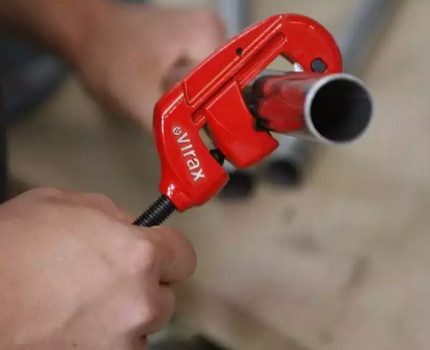
Three-roller unit demonstrates high speed and performance. Easily processes pipe material with a diameter of up to 100 mm. The edge on the cut makes it clear, even and smooth. Additionally grinding the surface or removing errors is not required.
The four-roller pipe cutter easily copes with active work and withstands heavy loads. Quickly and cleanly cuts off the pipe, leaving behind an almost perfect cut.
The manual model, depending on the manufacturer, is equipped with an additional convenient handle that allows you to work in pairs and cut pipe material of large diameter.
Technical specifications and principle of operation
The construction equipment market today offers for use various types of pipe cutters: mechanical manual, electromechanical and electrical. Hand units are considered the simplest and cheapest. Most often used in everyday life for one-time repair and installation works. They function only due to human muscle strength.
They have an ergonomic handle that provides the most effective conversion of effort into result. They do not require complicated maintenance, are highly durable and reliably serve for many years.

Electric pipe cutters are characterized by increased productivity, make a better, even cut and do not force the master to make significant efforts to perform the necessary actions.
How do pipe cutters of different types work?
According to the principle of action, the tool for cutting pipes is divided into four subclasses:
- Hand held They work under the direct influence of the physical strength of a person and do not require any specific skills from the user.
- Electric have an internal engine that starts the unit to work. Compact models of small and medium power are suitable for domestic use, and massive cope with large-scale tasks and increased loads. Equipped with a roller system for holding and rotating the pipe material. A cutting disc made of high-strength alloy is fed to the cutting area in manual mode or using an integrated drive.
- Pneumatic qualitatively and quickly cut large diameter pipes with cutters for contact with material of different densities, from thin plastic plastic to cast iron. They are mainly used for industrial work, as they differ in bulky dimensions and heavy weight. They are transported to the place of work on special trolleys and require qualified service by trained personnel.
- Hydraulic consist of a rod, piston and hydraulic pump. For full functioning, they do not need electric current, since they use the principle of fluid pressure in work. The internal pump creates an effect on the piston, which drives the mechanism. When the water pressure drops, the incisors return to their original positions. The device significantly exceeds the power of manual models, but inferior to equipment operating on an electrician.
This is not to say which tool is better and which is worse. Each of the above options has its advantages and is used depending on the tasks and the type of pipe material used.
Varieties of mechanical pipe cutters
Mechanical pipe cutters have some design features and distinctive features. Roller models carry out trimming by turning the unit around the pipe.
At this moment, the cutting part removes the metal layer, and the carriage with guide rollers is controlled by a moving screw handle and presses the disk with the necessary force to the pipe being processed.
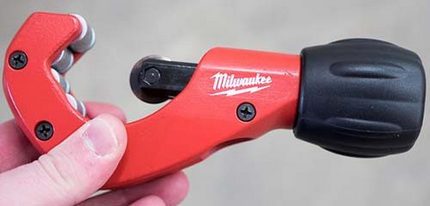
The detachable clamp devices are designed so that they can completely cover the pipe during the cutting process. Cutting elements are placed in pairs in the clamping and fixed parts of the unit.
Thanks to this design, the load is distributed evenly over the surface and the cutting is precise and precise. Most often, such tools are used for cutting pipes in confined spaces.
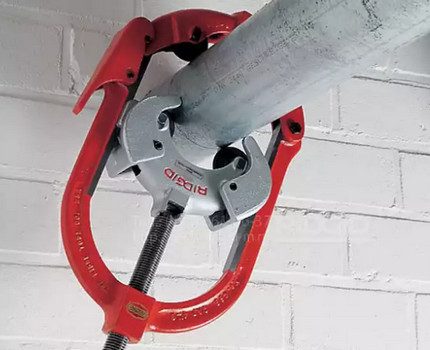
In chain models there are no volumetric elements and rotating parts. Working disks fastened in a free chain encircle the pipe in diameter.
Mechanics or hydraulics create tension and squeeze the part in the right place. The metal is not cut, but breaks, and the edge is quite clear and even.

In mechanical rotary pipe cutters, the cutting parts are located symmetrically in two fragments of a detachable design. The ring of such an aggregate is so large that it provides for the processing of pipe material with a diameter of up to 1000 mm.
Pistol type equipment is suitable for cutting pipes made of polymer plastic. The cut is carried out not by knives, but by sharpened blades made of high-strength, hardened steel.
The edge is smooth and does not require subsequent additional processing with sandpaper or any other grinding tool.
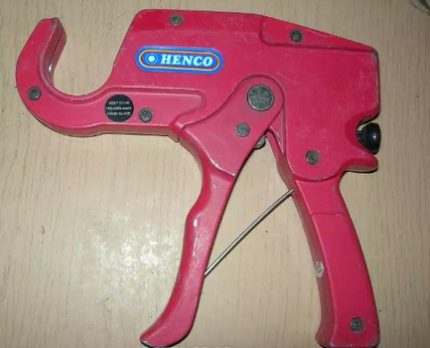
Choosing the right type of tool for yourself is necessary depending on the expected scope of work and the density of the processed material.
The principle of operation of the cutting elements of the pipe cutter
Structurally, pipe cutters differ from each other, all versions of this type of tool cut off the pipe in different ways. The heat treatment units do not so much cut off the material as they vaporize it and give a very good, smooth, even cut.
Guillotine tools separate the tubular element by means of the highest pressure concentrated on the sharp tip of the leading cutting part. Grinding aggregates, more likely, grind off a layer of the processed material, at the same time leveling and polishing a section of a section.
Classical models use a knife-type cutting element and simply cut a portion of the desired size from the main workpiece. Which tool is best used depends on the type of pipe used to install a particular communication system.
The most efficient pipe cutting machines
With quick and accurate cutting of pipes made of highly combustible materials, fireless cutting units do better than others. They easily and clearly process all types of polymers, including those that melt at a temperature of 180-200 ° C.
On our website there is a detailed article on how to choose a pipe cutter for plastic pipes, read Further.
For cutting solid, but ductile copper, classic roller models, both mechanical and electrical, are great. With the same type of tool, pipes are cut from more expensive materials (brass, bronze, etc.)
Cutting machines running on gas, cut steel pipes. For cast iron, this processing option is not suitable, since strong overheating is formed in the contact area of the cutting element with the pipe body. This negatively affects the basic properties of the metal and creates obstacles for smooth, accurate and high-quality cutting.
We also recommend that you review the pipe cutters for steel pipes. More details - go to the link.
For cutting pipe sections from multicomponent materials, various options for the manual guillotine are ideally suited. They do not damage the thin reinforcing layer of aluminum and do not crush the pliable polymer base.
Pipes made of ceramic or concrete are most often cut with an angle grinder. These materials do not react to thermal effects, and mechanical devices of the guillotine type lead to coloring of the edge and destruction of the integrity of the entire pipe.
In addition to equipment designed exclusively for cutting pipes, other tools are also used for this purpose, for example, a cutting disc machine, a circular saw, a laser perforating machine and a band saw.
However, this is relevant only for one-time work. If pipe cutting of various shapes, diameters and densities is carried out regularly, it is better to acquire a special narrow-profile tool.
Pipe cutting specifics
In everyday life, when carrying out various repair and installation works, the need often arises for cutting pipes of various diameters. To implement this, pipe cutters of various modifications or cutters help.
The first option ensures even pruning and serves the wearer for a long time. The second performs cutting well, but is considered less durable and involves use for several years.
Features of cutting small diameter pipes
For proper trimming, a small-diameter pipe is fixed in the clamp of the pipe cutter and the tool handle is turned clockwise so that the roller element touches the pipe surface. Then they make a second turn and carefully examine the trace of the cut. If the circle is closed and has no visible violations, work continues.
The tool handle is shifted by half a turn and pull the roller to the pipe. After making sure that the sharp cutting parts have entered the metal, they rotate the tool until it can cope with the task.
To move more smoothly and smoothly, the treatment area is lubricated with oil.Lubrication seriously reduces the temperature of metal processing and significantly speeds up the cutting process.
For cutting plastic pipes often do not use specialized equipment, but improvised tools available in the arsenal of each owner, for example, large scissors for metal. Cutters for polymer, outwardly very similar to household scissors, are taken from profile devices.
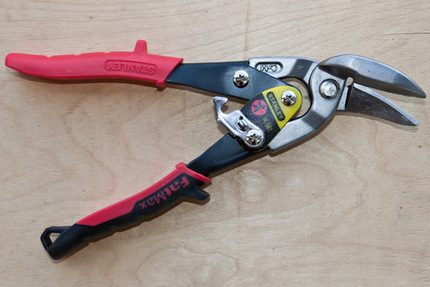
Reputable manufacturers sell pipe cutters for small-diameter products at a fairly high price, however, if the tool is needed for regular use, it will pay off and last for many years.
When the plans are some one-time work, the unit can be rented or asked for a while from relatives, friends or acquaintances.
You can read more about the various pipe cutting methods in this stuff.
How to cut large diameter pipes?
Regular cutting of pipes of medium and large diameter is almost not in demand in everyday life, but is very relevant for industrial production and enterprises. To work here, reliable and powerful units are required that can provide high speed cutting of the material and withstand round-the-clock operational loads.
For daily cutting of large volumes of metal pipe material, roller devices are used. The holder, which is part of the design, makes it possible to carry out cutting, while being at a small distance from the epicenter of the process.
To obtain a high-quality and even cut, translational movements are made up and down and stop when the pipe is cut. Work belongs to the category of labor-intensive and requires a lot of time.
The tool of this class shows the best results when processing objects made of thin metal. He copes with thick-walled products much worse.
For regular cutting of large-diameter pipes at some enterprises put a hacksaw. It is a bulky design, somewhat similar to a vertical milling machine. But instead of the milling cutter, a large hacksaw acts as an active element.
With this unit, not only pipes are cut, but also other metal parts. The most obvious disadvantage of this option is the sharp edge remaining after clipping. It seriously complicates further work with the cropped fragment.
In everyday life, for cutting large diameter pipes, it is often used grinder or any other cutting tool of such a plan. For processing, the pipe is rigidly fixed in the holder, and then the desired part is cut off.
In order for the cutting to be completed quickly and the worker not to be hurt, a safety casing is put on the unit and a special disk is designed specifically for cutting metal.
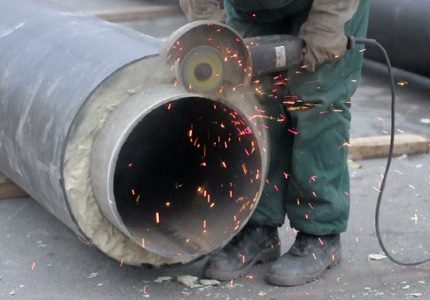
To obtain a perfectly even edge in the cut-off region, gas-plasma cutting is used. The semi-automatic processing mode (fixing the tubular part and cutting activation) is particularly successful. With manual cutting, a number of problems arise that the operator often cannot solve and the process is significantly delayed.
The most advanced tool for cutting large pipes is called laser equipment. Such installations almost instantly cut through the metal of any thickness and strength and leave an ideal cut without burrs after processing.
The CNC system makes it possible through the personal computer to set the machine the necessary program for the implementation of work of any complexity.
However, there is a restriction on the dimensions of the processed elements. The installation copes with pipes up to 6.5 meters long and an external diameter of up to 160 mm. The laser has a high cost and it is purchased only by enterprises that are constantly engaged in cutting, not only tube products, but also other metal parts.
Conclusions and useful video on the topic
Video review of manual pipe cutter for plastic pipes:
Video instruction on the use of a pipe cutter. The video shows how to properly process steel products of medium diameter with a pipe cutter:
Having become acquainted with the types and types of pipe-cutting equipment, it will not be difficult to choose the right tool. If doubts remain, the consultants of construction and hardware stores will be happy to come to the rescue and tell you which device is best to purchase.
Have questions about the topic of the article, find flaws in the material, or can you provide valuable information? Please leave your comments in the box below.

 Copper pipes for heating: types, specifics of marking + application features
Copper pipes for heating: types, specifics of marking + application features  Screen made of plastic pipes: types of partitions + step-by-step manufacturing instructions
Screen made of plastic pipes: types of partitions + step-by-step manufacturing instructions 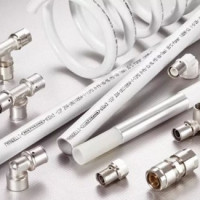 Press fittings for plastic pipes: types, marking, purpose + installation example
Press fittings for plastic pipes: types, marking, purpose + installation example 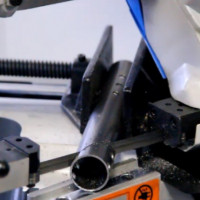 Pipe cutting at an angle: advantages and disadvantages of different methods + example of work
Pipe cutting at an angle: advantages and disadvantages of different methods + example of work 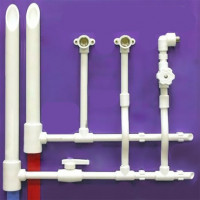 Installation of a water supply system from polypropylene pipes: typical wiring diagrams + installation features
Installation of a water supply system from polypropylene pipes: typical wiring diagrams + installation features 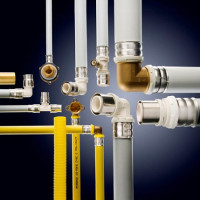 Plastic pipes: types, specifications, installation features
Plastic pipes: types, specifications, installation features  How much does it cost to connect gas to a private house: the price of organizing gas supply
How much does it cost to connect gas to a private house: the price of organizing gas supply  The best washing machines with dryer: model rating and customer tips
The best washing machines with dryer: model rating and customer tips  What is the color temperature of light and the nuances of choosing the temperature of the lamps to suit your needs
What is the color temperature of light and the nuances of choosing the temperature of the lamps to suit your needs  Replacement of a geyser in an apartment: replacement paperwork + basic norms and requirements
Replacement of a geyser in an apartment: replacement paperwork + basic norms and requirements
I always had a simple manual pipe cutter designed for cutting steel and cast iron pipes. Yes, I had to work hard, and then clean the cut, but it suited me. But now pipes are often made of plastic and polypropylene, a conventional pipe cutter can deform them. Therefore, I look after the electric model. As I understand it, the option with 4 clips is too much, with 3 it will be just right.
But why, and the four-roll pipe cutter is not too much. After all, it is not always possible to have a complete revolution, but 120 degrees are enough.